Chandrayaan-3 Updates: India Returns Propulsion Module Back in Earth’s Orbit
25th Sep 2023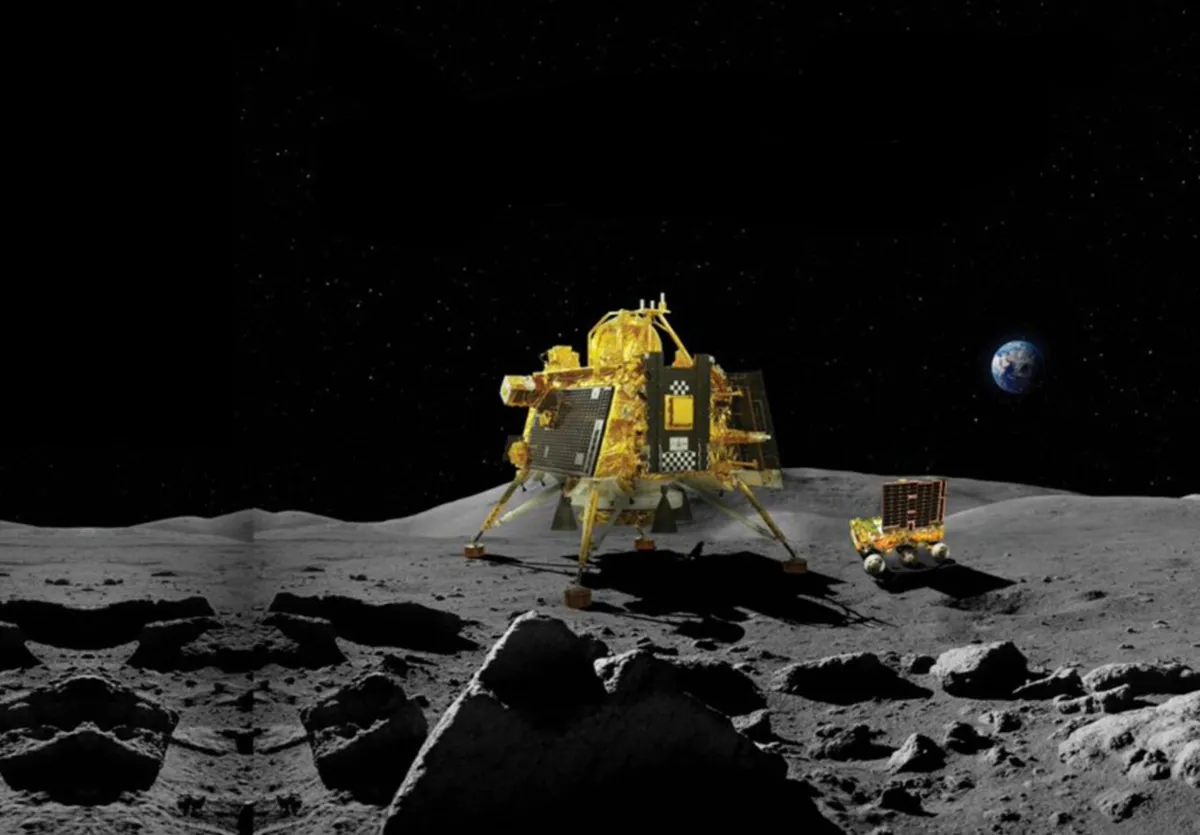
In August 2023, India became the fourth country ever to land a spacecraft on the Moon and the first to land at the South Pole. Here are the latest updates on the historical mission.
Update 6th December: Chandrayaan-3 Propulsion Module Returns to Home
ISRO has reported that the Chandrayaan-3’s Propulsion Module (PM) was successfully transitioned from lunar orbit to Earth’s orbit. Following its detachment from the Vikram lander, which it had transported in proximity to the Moon before its landing on 23 August, the propulsion module underwent intricate manoeuvres to re-enter Earth’s orbit.
This achievement holds significance in ISRO’s endeavours to pave the way for future manned missions. The module will now assume a vigilant position, observing Earth from its newly established orbit, as stated by ISRO.
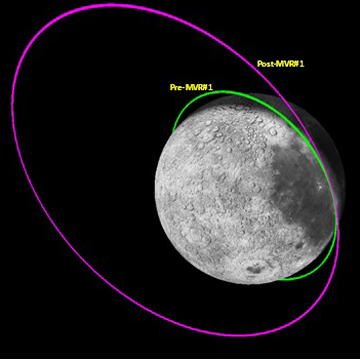
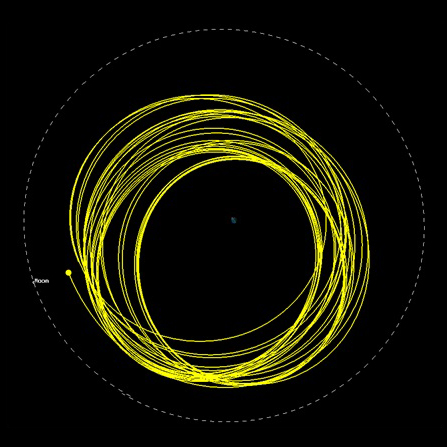
Update 25th September:
The Indian Space Research Organisation (ISRO) has encountered difficulties in establishing communication with the Vikram lander and Pragyan rover from the Chandrayaan-3 mission. This situation has sparked concerns regarding the current operational status of these lunar rovers.
Despite multiple efforts, signals from these lunar probes have not been received. Still, ISRO says it will continue trying to establish contact with the two.
Update 4th September:
Following a scheduled activity sequence, ISRO announced on Monday that the Vikram lander entered sleep mode at approximately 8 am. The space agency aims to reawaken the rover on 22nd September 2023, after a period of 14 days.
According to a post by the Indian space agency on X, “In-situ experiments by ChaSTE, RAMBHA-LP and ILSA payloads are performed at the new location. The data collected is received at the Earth. Payloads are now switched off. Lander receivers are kept ON. Vikram will fall asleep next to Pragyan once the solar power is depleted and the battery is drained. Hoping for their awakening around September 22, 2023.”
Update 1st September:
The Indian Space Research Organization (ISRO) has officially confirmed the successful detection of sulfur and other elements on the lunar south pole by India’s Chandrayaan-3 rover. While its primary mission was to locate frozen water, this newfound discovery stands as a significant achievement for the Indian team.
ISRO revealed that the rover’s laser-induced spectroscope identified multiple elements, such as aluminium, iron, calcium, chromium, titanium, manganese, oxygen, and silicon, on the Moon’s surface.
Update 25th August:
Chandrayaan-3 Rover ramped down from the Lander to the lunar surface and made its first movements. The Rover has successfully traversed a distance of about 8 meters.
Update4 23rd August:
Indian mission Chandrayaan-3 sent the first photo from the surface of the Moon.
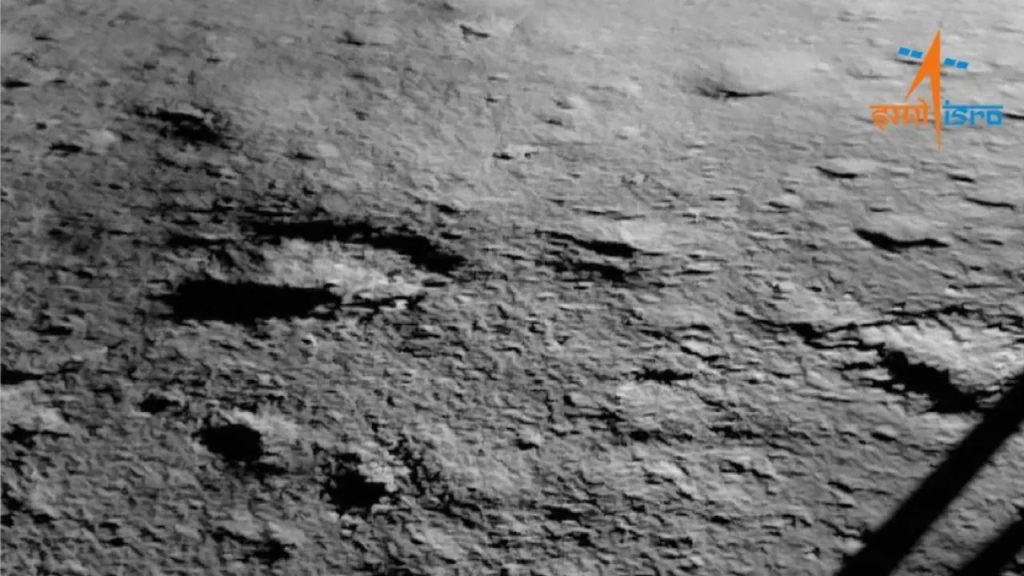
The Indian Space Research Organization (ISRO) posted these photos on Twitter, just a few hours after the successful descent of the Chandrayaan-3 spacecraft to the surface of the Moon. The first image shows spots and relief features scattered near the south pole of our natural moon. All of the four photos was obtained thanks to the camera measuring the horizontal speed of the lander. Additional images obtained from the Landing Imager camera show the landing site, including a fragment of the spacecraft’s landing leg and its shadow.
Update3 23rd August:
Goonhilly Earth Station took on Communications Support for the Chandrayaan-3 mission after its lander successfully touched down near the lunar south pole.
Update2 23rd August:
India has created history as it became the first country to land on the South Pole of lunar surface.
On Wednesday, Chandrayaan-3 successfully landed near the Moon’s south pole, an uncharted territory that scientists believe could hold vital reserves of frozen water and precious elements, as the country cements its growing prowess in space and technology. A lander with a rover inside touched down on the lunar surface at 6:04 local time, sparking cheers and applause among the space scientists watching in the southern Indian city of Bengaluru.
After a failed attempt nearly four years ago, India made history by becoming the first country to touch down near the little-explored south pole region and joins the United States, the Soviet Union and China in achieving a moon landing.
Update1 23rd August:
India’s ISRO is waiting for the next step, namely the descent to the Moon, which will occur this afternoon:
Update 22nd August: how to watch the Chandrayaan-3 landing online?
The Indian Space Research Organisation (ISRO) shares images of the moon captured by the Lander Position Detection Camera (LPDC) from an altitude of about 70 km, on 19th August, 2023.
ISRO also tweeted that the Chandrayaan-3 mission is “on schedule.”
The live telecast of the landing operations at MOX/ISTRAC begins at 5:20 pm IST on Wednesday, 23rd August 2023.
Update 17th August: successful separation of the Lander Module
Indian Chandrayaan-3 achieved another key milestone on its way to the historic moon landing. The Indian Space Research Organisation (ISRO) reported that the spacecraft’s lander Vikram successfully separated from its propulsion module on 17th August. The lander continues its journey towards the Moon, where it is expected to make a soft landing on 23rd August.
Named after the founder of the Indian space programme, Vikram Sarabhai, the lander carries the Pragyan rover.
Update 16th August: Chandrayaan-3 prepares for LM separation
Chandrayaan-3 just performed its last important move before its moon landing. ISRO announced the successful manoeuvre on Wednesday, 16th August. This was the final step before the spacecraft got closer to the moon, which was supposed to happen next week.
“Today’s successful firing, needed for a short duration, has put Chandrayaan-3 into an orbit of 153 km x 163 km, as intended. With this, the lunar bound manoeuvres are completed,” ISRO said today.
The next thing ISRO is waiting for is the separation of Vikram Lander from the Propulsion Module, which is expected to occur tomorrow, 17 August.
ISRO has also released two images made by the Chandrayaan-3 spacecraft. The first picture shows the Earth and was taken by the Lander Imager Camera. The second picture offers the view of the Moon, taken by the Lander Horizontal Velocity Camera on 6th August.
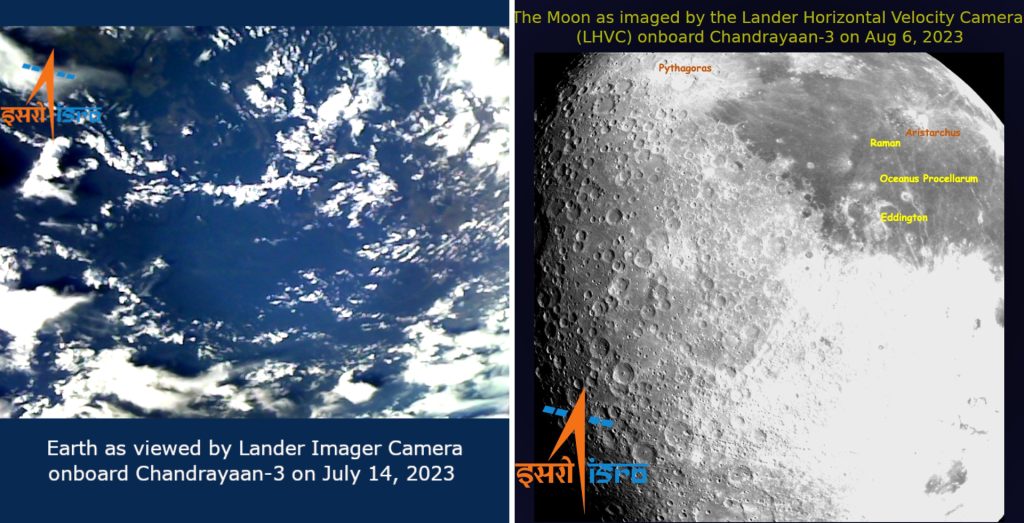
Chandrayaan-3, the third and most recent Indian lunar mission, was sent to the moon on 14th July. It reached lunar insertion orbit on 5th August. This mission aims to achieve what the previous one couldn’t – gently land on the moon’s surface near the South Pole and move around there.
The lander and rover are expected to land near the lunar south pole region on 23rd August 2023, two days after the Russian Luna-25 mission is scheduled to land.
Update 5th August: Chandrayaan-3 reaches lunar orbit
The Indian Space Research Organisation’s (ISRO) Chandrayaan-3 mission has reached its next major milestone: lunar insertion orbit. From here, scientists and engineers will begin performing a series of manoeuvres to place Chandrayaan-3 over the lunar poles, where it will eject the lander module.
The stunning images of the Moon, captured by the Chandrayaan-3 spacecraft, were unveiled by India’s space agency after the spacecraft’s entrance into lunar orbit this past Saturday.
These images show craters upon the lunar surface as the spacecraft steadily approaches its destination.
Hitting the major milestone has been met with relief; however, sights are now set on landing the rover, with previous controlled landing attempts failing during the Chandrayaan-2 mission. Nevertheless, ISRO said in a statement: “The health of Chandrayaan-3 is normal.” Adding: “Throughout the mission, the health of the spacecraft is being continuously monitored from the Mission Operations Complex.” The spacecraft will also be supported by the British deep space satellite, Goonhilly Earth Station – under the ESA network – and NASA’s JPL Deep space antenna.
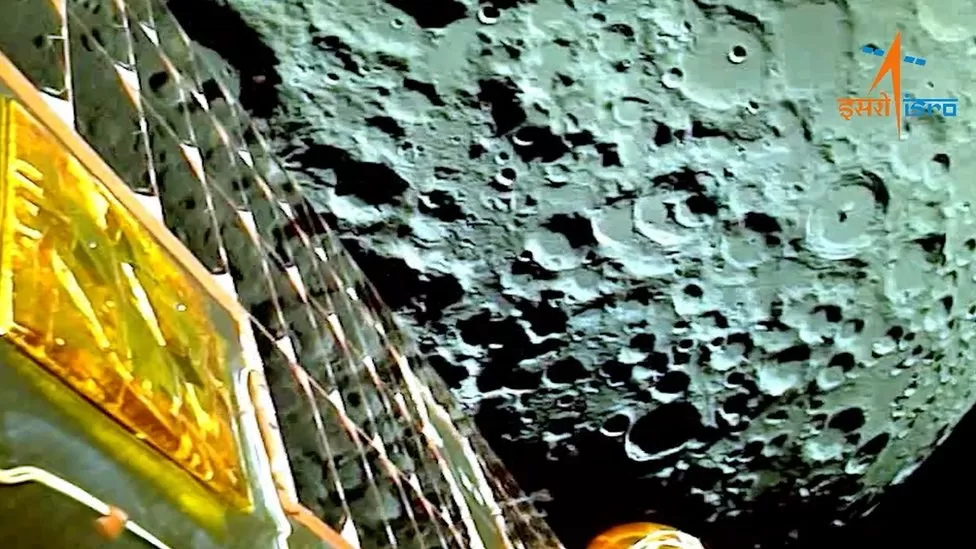
When will Chandrayaan-3 reach the moon?
Scheduled for a touchdown on the lunar surface on August 23rd, Chandrayaan-3’s lander and rover aim to execute a controlled “soft landing.” If successful, it would mark India as the pioneering nation to achieve this feat near the southern pole of the Moon.
Where is Chandrayaan-3 now?
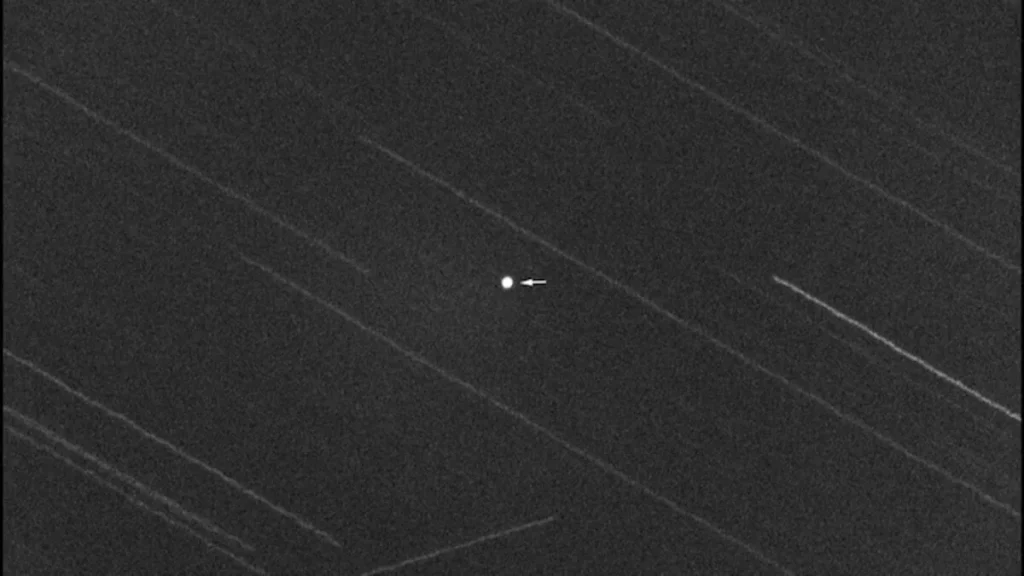
The Chandrayaan-3 spaceship is now on its way to the Moon. A telescope from Italy’s Virtual Telescope Project in Manciano has taken a cool video showing the spaceship moving through space towards the Moon.
They watched the spaceship from a spot 341 kilometres above Earth. It was launched on July 14, 2023, from Sriharikota, India, and it’s going on a big mission to explore the Moon’s land.
In the video, the spacecraft’s voyage through space is depicted, with Chandrayaan-3 appearing as a small, swiftly moving dot set against the immense expanse of the universe.
Chandrayaan-3: Bound For The Lunar Poles
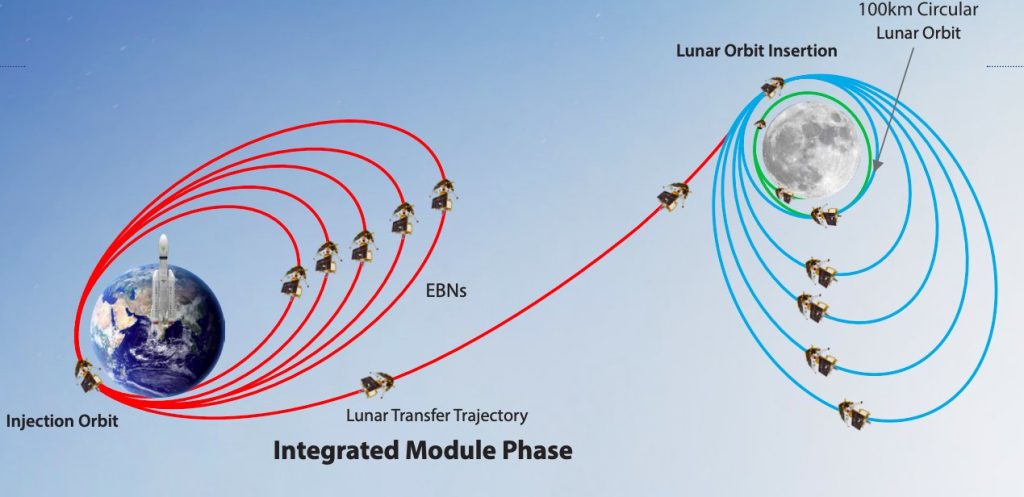
After spending a week in Earth’s orbit, Chandrayaan-3 performed a slingshot manoeuvre which sent it into translunar orbit. From there, subsequent manoeuvres will try to get wheels on the ground when the lunar rover attempts to land and research the Moon’s south pole.
To insert into lunar orbit, ISRO said they retro-burned at the Perilune for 1835 seconds. Then, a subsequent planned manoeuvre placed the spacecraft 164 km x 18074 km in orbit. Finally, a third manoeuvre successfully: “inserted [Chandrayaan-3] into the lunar orbit.”
Upcoming phases will gradually reduce the spacecraft’s orbital position, placing it over the lunar south pole. Some manoeuvres later, the “propulsion module will separate from the lander while in orbit”. ISOS said: “Following that, a series of complex braking manoeuvres will be executed to facilitate a soft landing in the South Polar region of the Moon.”
What Chandrayaan-3 Spacecraft Will Be Researching
Blasting off on 14th July, Chandrayaan-3’s historic mission is designed to achieve a controlled landing on the Moon successfully. It will also research the Moon’s composition as well as the scarcely under-explored lunar poles. If ISRO succeeds, India will become the fourth country to have achieved such a delicate landing on the lunar surface, joining the ranks of the United States, the former Soviet Union, and China.
Previous Chandrayaan Missions
The first Chandrayaan mission found water molecules in shadowed areas, and uncovered that the Moon has an atmosphere during daylight. A subsequent Chandrayaan-2 mission did have some success, but its lunar rover crashed during descent. ISRO said they have performed simulations to ensure Chandrayaan-3’s landing module is prepared, based on data collected from the crash.
The £58 million, 3,900 kg Chandrayaan-3 will soon build on prior lunar success when their lander, Vikram – named after ISRO founder, Vikram Sarabha – hits the Moon’s surface. Vikram weighs around 1,500 kg and contained within the belly, is the 26 kg rover – called Pragyaan – which will explore the lunar poles.

![Beauty of the Pink Moon And Lyrid Meteor Shower in This Week’s Best Astrophotos [19-26 April] Beauty of the Pink Moon And Lyrid Meteor Shower in This Week’s Best Astrophotos [19-26 April]](https://orbitaltoday.com/wp-content/uploads/2024/04/Pink-Moon-is-on-its-way-above-the-mountains-1-300x300.jpg)





Thank you for your comment! It will be visible on the site after moderation.